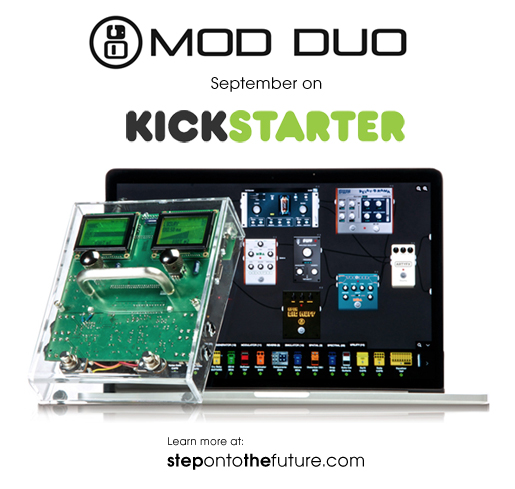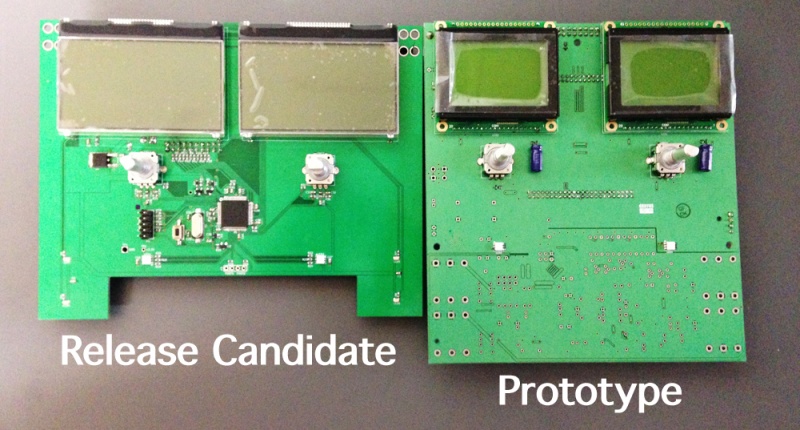|
|
| (4 intermediate revisions by 3 users not shown) |
| Line 5: |
Line 5: |
| | After a year of engineering, in February 2016, our new product, The MOD Duo has been released. | | After a year of engineering, in February 2016, our new product, The MOD Duo has been released. |
| | | | |
| − | With MOD Duo the MOD entered in a new era. We migrated from the Intel PC architecture to a whole new ARM hardware topology. We also developed the sound card from scratch, following audiophile and high fidelity concepts. And we moved from São Paolo - Brazil, to San Francisco - USA to reach the global market, then to Berlin in Germany. | + | With MOD Duo the MOD entered a new era. We migrated from the Intel PC architecture to a whole new ARM hardware topology. We also developed the sound card from scratch, following audiophile, and high fidelity concepts. And we moved from São Paolo - Brazil, to San Francisco - the USA to reach the global market, then to Berlin in Germany. |
| | | | |
| − | It has much larger graphic displays (2,8 inches), a smaller enclosure to blend with your stomp boxes, two footswitches and two encoders. | + | It has much larger graphic displays (2,8 inches), a smaller enclosure to blend with your stompboxes, two footswitches, and two encoders. |
| | | | |
| − | We launched a crowd funding [https://www.kickstarter.com/projects/modduo/mod-duo-the-limitless-multi-effects-pedal/description kickstarter campaign] to raise funds to produce the MOD Duo. | + | We launched a crowdfunding [https://www.kickstarter.com/projects/modduo/mod-duo-the-limitless-multi-effects-pedal/description Kickstarter campaign] to raise funds to produce the MOD Duo. |
| | | | |
| | We already had working prototypes and a release candidate product. | | We already had working prototypes and a release candidate product. |
| Line 23: |
Line 23: |
| | [[File:MOD-Duo-RC1-PCB-2.jpg|800px|thumb|left|MOD Duo Release Candidate 1 PCB with HI-FI sound card]] | | [[File:MOD-Duo-RC1-PCB-2.jpg|800px|thumb|left|MOD Duo Release Candidate 1 PCB with HI-FI sound card]] |
| | <br clear=all> | | <br clear=all> |
| − |
| |
| − | == Technical specs ==
| |
| − |
| |
| − | === Dimensions ===
| |
| − |
| |
| − | [[File:MOD_Duo_all_views.png|thumb|200px|MOD Duo dimensions in mm]]
| |
| − |
| |
| − | * width: 180 mm
| |
| − | * length: 160 mm
| |
| − | * height: 74.7 mm
| |
| − |
| |
| − | === Inputs and outputs ===
| |
| − |
| |
| − | ==== Audio ====
| |
| − |
| |
| − | [[File:MOD_Duo_blue_side_view.jpeg|thumb|200px|MOD Duo left side view showing the audio and headphone outputs.]]
| |
| − |
| |
| − | * 2 independent inputs:
| |
| − | ** TS connectors
| |
| − | ** Digital input impedance selector
| |
| − | ***line 1 MΩ
| |
| − | ***microphone 3 kΩ
| |
| − | ***instrument 75 kΩ
| |
| − | ** Programmable Gain Amplifier: ± 12 dB Gain, 0.5 dB step plus a 32 dB gain stage for microphone
| |
| − | * 2 independent outputs:
| |
| − | ** TRS connectors (balanced)
| |
| − | ** Volume Control: 0 to -127 dB, 0.5dB step
| |
| − | * Headphone output:
| |
| − | ** TRS connector
| |
| − | ** Digital volume control from +12dB to −33dB
| |
| − |
| |
| − | Each input/output uses a Neutrik® connector, a True Bypass circuit and has a LED whose color depends on the audio signal amplitude.
| |
| − | * signal < -30dB : off
| |
| − | * -30dB < signal < -12dB : green
| |
| − | * -12dB < signal < -3dB : yellow
| |
| − | * signal > -3dB : red
| |
| − |
| |
| − | ==== MIDI ====
| |
| − |
| |
| − | * MIDI IN connector - DIN 5 pins - for musical instruments and controllers
| |
| − | * MIDI OUT connector - DIN 5 pins
| |
| − |
| |
| − | ==== USB ====
| |
| − |
| |
| − | * USB HOST - USB 2.0 Standard-A type
| |
| − | ** USB Bluetooth
| |
| − | ** USB Wifi
| |
| − | ** USB MIDI
| |
| − | * USB DEVICE - USB 2.0 Standard-B type
| |
| − | ** USB Ethernet Adaptor
| |
| − | ** USB Mass Storage (used for updates)
| |
| − |
| |
| − | ==== Controllers ====
| |
| − |
| |
| − | * 2 knobs with LCD screen
| |
| − | * 2 foot switches with color LEDs
| |
| − | * RJ-45 connector for additional controllers (see [[Control Chain]])
| |
| − |
| |
| − | === Processors ===
| |
| − |
| |
| − | *A20 CPU:
| |
| − | ** Dual Core ARM A7 1.0GHz
| |
| − | ** 1 GB RAM
| |
| − | ** 4 GB Flash Storage
| |
| − | * Audio CODEC:
| |
| − | ** Manufacturer: Cirrus Logic
| |
| − | ** DAC: 104dB dynamic range, -90dB THD+N
| |
| − | ** ADC: 104dB dynamic range, -95dB THD+N
| |
| − | ** 24 bit / 48 kHz AD/DA
| |
| − |
| |
| − | === Peripherals ===
| |
| − |
| |
| − | * [[MOD Arduino Shield|Arduino shield]]
| |
| − | * [[MOD_Peripherals#MOD_Expression_Pedal|expression pedal]]
| |
| − | * [[MOD_Peripherals#MOD_Footswitch_Extensor|extra foot switches]]
| |
| − |
| |
| − | === Software ===
| |
| − |
| |
| − | The MOD Duo uses a linux operating system with LV2 plugins to define virtual pedal boards.
| |
| − |
| |
| − | [[category:MOD Duo]]
| |
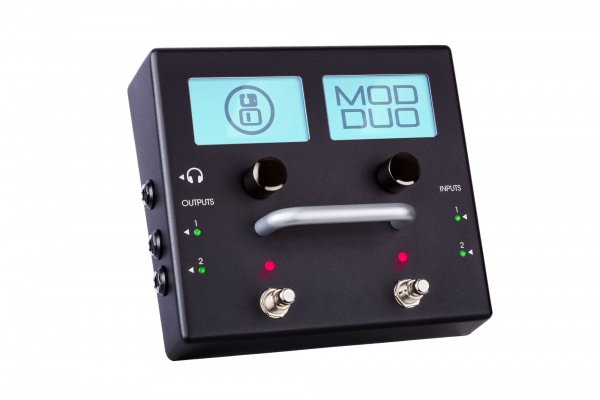
MOD Duo, viewed from the top.
Development
After a year of engineering, in February 2016, our new product, The MOD Duo has been released.
With MOD Duo the MOD entered a new era. We migrated from the Intel PC architecture to a whole new ARM hardware topology. We also developed the sound card from scratch, following audiophile, and high fidelity concepts. And we moved from São Paolo - Brazil, to San Francisco - the USA to reach the global market, then to Berlin in Germany.
It has much larger graphic displays (2,8 inches), a smaller enclosure to blend with your stompboxes, two footswitches, and two encoders.
We launched a crowdfunding Kickstarter campaign to raise funds to produce the MOD Duo.
We already had working prototypes and a release candidate product.
Read more in our website.
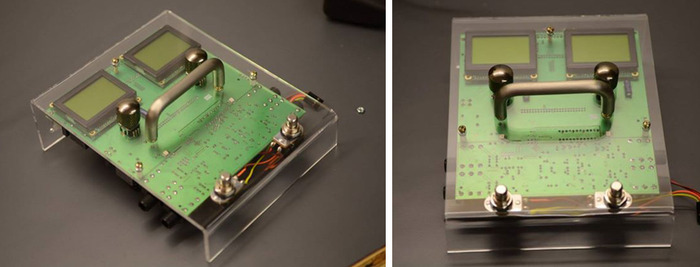
MOD Duo Acrylic Prototype
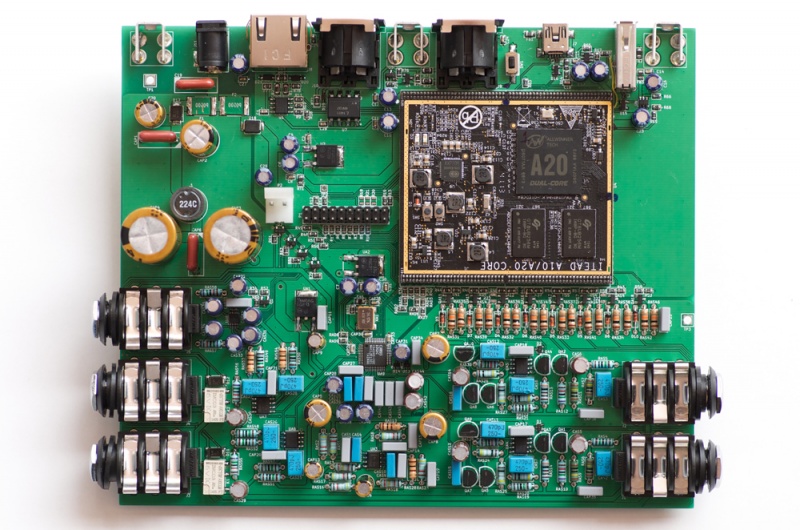
MOD Duo Release Candidate 1 PCB with HI-FI sound card
